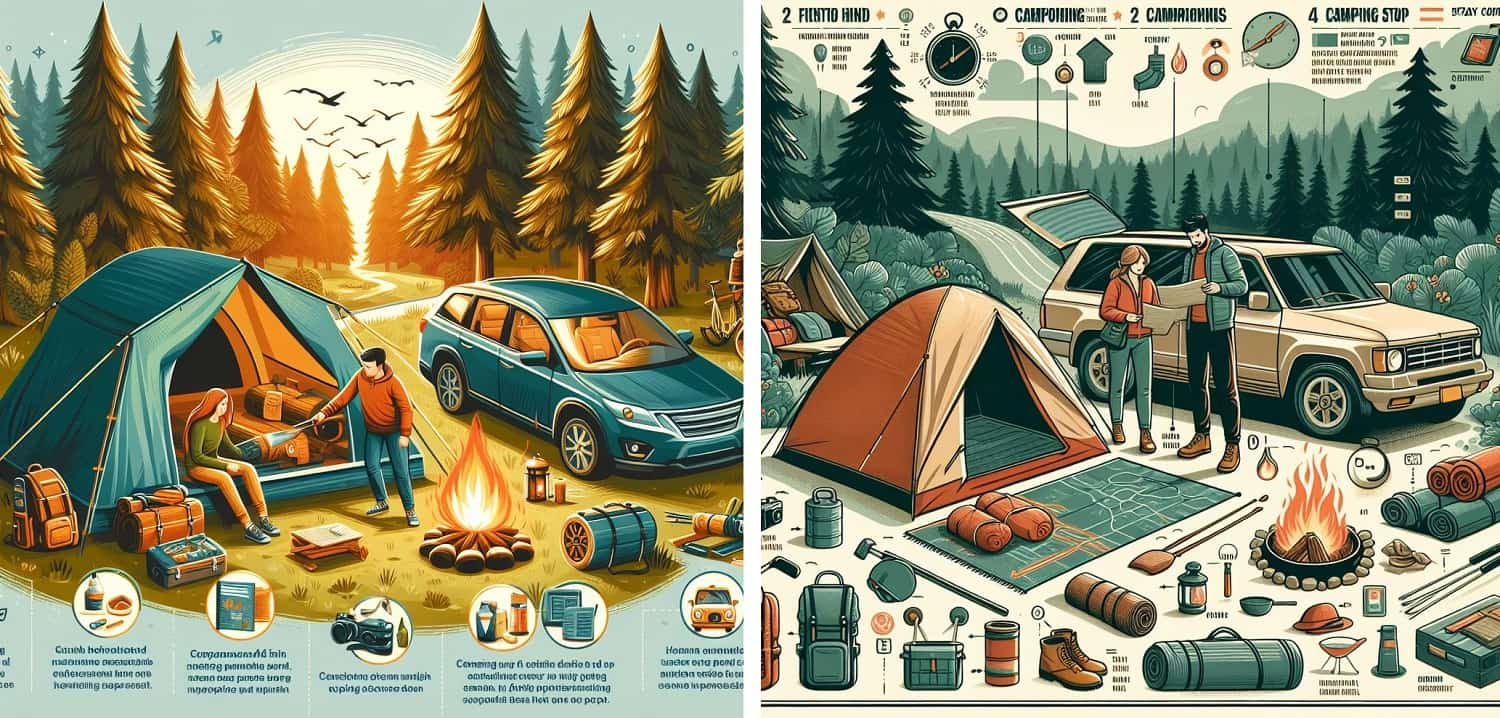Are you ready to embark on a winter camping adventure but unsure how to stay warm and comfortable in your vehicle? Look no further! Whether you’re a seasoned winter camper or a newbie to cold-weather excursions, this comprehensive guide has got you covered. From selecting the perfect sleeping bag to maximizing insulation, we’ll explore expert tips to ensure your winter car camping experience is nothing short of amazing.
Key Takeaways:
- Invest in a high-quality, cold-rated sleeping bag rated 15-20 degrees cooler than expected temperatures.
- Opt for a mummy-shaped sleeping bag to minimize excess space and maximize insulation.
- Choose a top-notch sleeping pad with a high R-value to prevent heat loss from the ground.
- Keep a dedicated pair of warm socks in your sleeping bag to ensure dry, cozy feet throughout the night.
- Consume a fatty snack like peanut butter before bedtime to provide your body with fuel for warmth.
- Avoid cotton base layers, which trap moisture. Opt for wool or other moisture-wicking materials.
- Crack windows in your vehicle to allow moisture to escape, maintaining a warmer and more comfortable sleeping environment.
- Layer clothing appropriately to regulate body temperature and avoid sweating.
Selecting the Perfect Sleeping Bag
Investing in a high-quality sleeping bag is crucial for a comfortable night’s sleep in cold temperatures. When choosing a sleeping bag for winter car camping, consider the following factors:
- Temperature Rating: Look for a sleeping bag rated for temperatures 15-20 degrees cooler than the expected nighttime lows.
- Shape: Opt for a mummy-shaped sleeping bag to minimize excess space and maximize insulation.
- Insulation: Choose a sleeping bag with synthetic or down insulation, depending on your preferences and budget.
- Size: Ensure your sleeping bag provides enough room for comfortable sleeping without excessive empty space.
Enhancing Insulation with Sleeping Pads
In addition to a quality sleeping bag, a high-R-value sleeping pad is essential for insulating yourself from the cold ground. Consider these tips when selecting a sleeping pad for winter car camping:
- R-Value: Choose a sleeping pad with a high R-value to prevent heat loss from the ground.
- Thickness: Opt for a thicker sleeping pad to provide additional cushioning and insulation.
- Material: Select a sleeping pad made from durable and insulating materials, such as closed-cell foam or inflatable designs.
Keeping Feet Warm and Dry
Cold, damp feet can quickly ruin a winter camping trip. Keep your feet warm and dry throughout the night with these tips:
- Dedicated Socks: Reserve a pair of warm socks exclusively for sleeping to ensure they stay dry and cozy.
- Foot Care: Remove damp socks before bedtime and allow your feet to breathe to prevent moisture buildup.
- Warm-Up Routine: Consider warming your feet with a hot water bottle or by rubbing them together before slipping into your sleeping bag.
Fueling Your Body for Warmth
Consuming a fatty snack before bedtime can provide your body with the fuel it needs to generate warmth throughout the night. Consider these snack options:
- Peanut Butter: Enjoy a spoonful of peanut butter for a delicious and energy-rich pre-bedtime snack.
- Nuts and Seeds: Snack on a handful of almonds, walnuts, or sunflower seeds for a nutritious and satisfying treat.
- Cheese: Indulge in a slice of cheese or a cheese stick for a tasty and protein-packed snack.
Ventilating Your Sleeping Space
While it may seem counterintuitive, cracking windows in your vehicle can help maintain a warmer and more comfortable sleeping environment. Here’s why ventilation is important:
- Moisture Control: Ventilating your sleeping space allows moisture from your breath to escape, preventing condensation buildup inside the vehicle.
- Temperature Regulation: By allowing fresh air to circulate, you can regulate the temperature inside your vehicle and prevent overheating.
Layering Clothing for Comfort
Layering clothing is essential for regulating body temperature and staying comfortable throughout the night. Follow these layering tips:
- Base Layer: Start with a moisture-wicking base layer made from wool or synthetic materials to keep your skin dry.
- Insulating Layer: Add an insulating layer, such as a fleece or down jacket, to trap heat close to your body.
- Outer Shell: Finish with a waterproof and windproof outer shell to protect against the elements and retain warmth.
Conclusion
With the right gear and preparation, winter car camping can be a rewarding and unforgettable experience. From selecting the perfect sleeping bag to layering clothing effectively, these expert tips will help you stay warm, cozy, and comfortable on your cold-weather adventures. So gear up, embrace the chill, and enjoy the beauty of the winter wilderness from the comfort of your vehicle!















